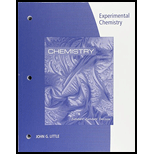
Concept explainers
(a)
Interpretation: The following organic compounds are to be named.
Concept introduction: The
To determine: The name of the given organic compound.
(b)
Interpretation: The following organic compounds are to be named.
Concept introduction: The IUPAC nomenclature of organic compound is a method used for naming organic chemical compounds as recommended by the International Union of Pure and Applied Chemistry (IUPAC). Aldehydes and ketones contain carbonyl
To determine: The name of the given organic compound.
(c)
Interpretation: The following organic compounds are to be named.
Concept introduction: The IUPAC nomenclature of organic compound is a method used for naming organic chemical compounds as recommended by the International Union of Pure and Applied Chemistry (IUPAC). Aldehydes and ketones contain carbonyl
To determine: The name of the given organic compound.
(d)
Interpretation: The following organic compounds are to be named.
Concept introduction: The IUPAC nomenclature of organic compound is a method used for naming organic chemical compounds as recommended by the International Union of Pure and Applied Chemistry (IUPAC). Aldehydes and ketones contain carbonyl
To determine: The name of the given organic compound.
(e)
Interpretation: The following organic compounds are to be named.
Concept introduction: The IUPAC nomenclature of organic compound is a method used for naming organic chemical compounds as recommended by the International Union of Pure and Applied Chemistry (IUPAC). Aldehydes and ketones contain carbonyl
To determine: The name of the given organic compound.
Want to see the full answer?
Check out a sample textbook solution
Chapter 22 Solutions
Lab Manual for Zumdahl/Zumdahl/DeCoste¿s Chemistry, 10th Edition
- # 2. Drow full structures of the organic product expected in each of the following reactions. Draw the appropriate stereoisomer where warranted! Tos Cl O C NaCN PCC శ్రీ CI TSCI Pyridine H₂CrO4 PBrj Pyridine NaCNarrow_forwardPLEASE help. Locate a literature IR spectrum of eugenol. Insert the literature spectrum here: What conclusions can you draw about your clove oil from these IR spectra? I attached my data belowarrow_forwardplease help and the percent recovery of clove oil from cloves is 4.61% and i have attached my ir spectrum as well. Based on your GC data, how many components are in the clove oil? Calculate the percentage of each component. Clearly show your work. Which of the components corresponds to eugenol? How do you know? Is eugenol the major component?arrow_forward
- please help and i am so confused if the picture is the gc data or ir spectrum. you dont have to do everything just what you can please because i am lost and the mass of the cloves was Mass of cloves 62.299g. Mass of recovered clove oil 62.761g.arrow_forwardWhich compound would you expect to have a higher decomposition temperature,Na2CO3 or Cs2CO3? Justify your answer, but you do not need to do any calculations.arrow_forwardCan I get some help drawing my arrows. I included what the final needs to look likearrow_forward
- Chemistry: Matter and ChangeChemistryISBN:9780078746376Author:Dinah Zike, Laurel Dingrando, Nicholas Hainen, Cheryl WistromPublisher:Glencoe/McGraw-Hill School Pub Co
 Chemistry for Today: General, Organic, and Bioche...ChemistryISBN:9781305960060Author:Spencer L. Seager, Michael R. Slabaugh, Maren S. HansenPublisher:Cengage Learning
Chemistry for Today: General, Organic, and Bioche...ChemistryISBN:9781305960060Author:Spencer L. Seager, Michael R. Slabaugh, Maren S. HansenPublisher:Cengage Learning Introductory Chemistry: A FoundationChemistryISBN:9781337399425Author:Steven S. Zumdahl, Donald J. DeCostePublisher:Cengage Learning
Introductory Chemistry: A FoundationChemistryISBN:9781337399425Author:Steven S. Zumdahl, Donald J. DeCostePublisher:Cengage Learning  Living By Chemistry: First Edition TextbookChemistryISBN:9781559539418Author:Angelica StacyPublisher:MAC HIGHER
Living By Chemistry: First Edition TextbookChemistryISBN:9781559539418Author:Angelica StacyPublisher:MAC HIGHER Introductory Chemistry: An Active Learning Approa...ChemistryISBN:9781305079250Author:Mark S. Cracolice, Ed PetersPublisher:Cengage Learning
Introductory Chemistry: An Active Learning Approa...ChemistryISBN:9781305079250Author:Mark S. Cracolice, Ed PetersPublisher:Cengage Learning





